No matter how much I learn about the garden, there’s always more to know. To plug the (many!) gaps in my knowledge, I often designate my own “Year of the [Fill in the Blank]” to zoom in on a single subject.
One was The Year of Ornamental Grasses. At the start, I knew almost zip. Except that I was adept at killing Japanese forest grass (Hakonechloa). By the end, I knew, well, not everything, but more.
Then there was The Year of Powdery Mildew
Sadly, that one chose me. Enthusiastically. Devastatingly. But I wanted to know what made it tick, and learn whether this expletive-deleted fungal disease played any positive role in the landscape.
Guess what? It’s food – for a genus of fungus-eating lady beetles (Psyllobora)! See the greener patches they ate bare below?
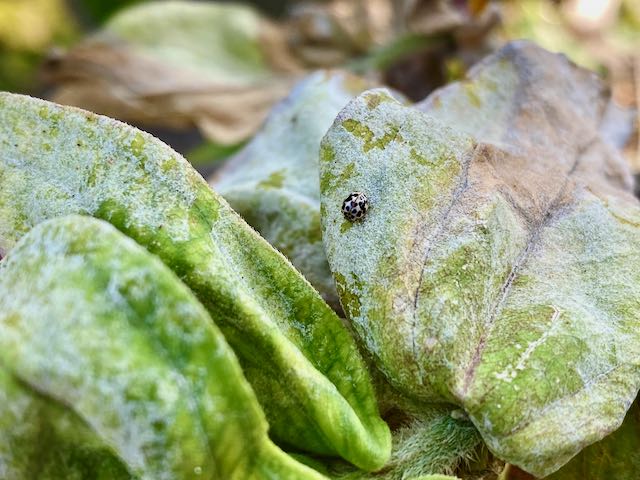 Tiny 20-spotted lady beetle (Psyllobora vigintimaculata) was too small to identify as a lady beetle with the eye alone. Macro camera settings to the rescue!
Tiny 20-spotted lady beetle (Psyllobora vigintimaculata) was too small to identify as a lady beetle with the eye alone. Macro camera settings to the rescue!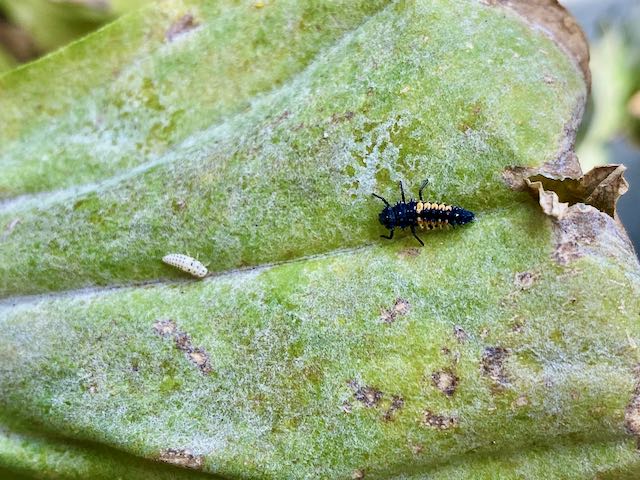 White Psyllobora larva being eyed (as lunch?) by a Harmonia or Asian multi-coloured lady beetle larva. Similar alligator-like shape; vastly different size and colour. Fascinating, says my inner Spock!
White Psyllobora larva being eyed (as lunch?) by a Harmonia or Asian multi-coloured lady beetle larva. Similar alligator-like shape; vastly different size and colour. Fascinating, says my inner Spock!Who knew there was a vegan lady beetle?
Not me. Without my disastrous Year of I might’ve just sprayed the d*
mned mildew with a milk solution (1 part milk to 9 parts water), and never have made their acquaintance.
On the other hand, I might have saved my zinnias. And cucumbers. Hmmmm.
But the natural world would’ve felt smaller. Inspired by that wee beetle and a new presentation I was writing for the Toronto Botanical Garden’s Pollinator Week, I decided to get out and meet more bugs!
My Year of the Bugs has become an obsession
Who are you? I wonder with every photo of a new bug. Then the detective work of bug ID begins. I’ve used resources like:
- Google image search (avoid anything from P*nterest)
- Sites like bugguide.net
- Books like Jessica Walliser’s Attracting Beneficial Bugs to your Garden (great for understanding bug behaviour)
- Or Heather Holm’s Pollinators of Native Plants (not just for native plants, with excellent photos for ID)
- Or the comprehensive Field Guide to the Flower Flies of Northeastern North America (all 416 species!)
- And helpful groups like Facebook’s Insects and Arachnids of Ontario.
I’ve bought a lot
of bug books. And I love it.
My Year of the Bugs has been teaching me that not only are pollinators more diverse than we think, but the big world of insects is surprisingly beautiful, overwhelmingly beneficial (according to Walliser, 99% a
re either beneficial or benign) an
d staggeringly cool.
I plan to introduce you to more of my new friends soon.
What is your “Year of the …” in 2021?


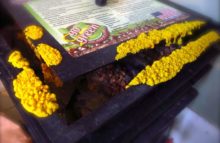
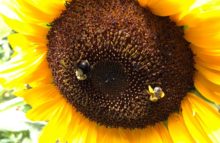
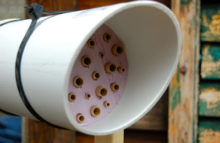
2 comments
Hey Helen! Here is a time-saving app for you:
Seek by iNaturalist. Just point your phone camera and it gets to work. It is really helpful for a quick I.D. If Seek can’t I.D. the photo it can be posted to it’s mother iNaturalist. iNaturalist is a great citizen science platform where photos are first given a likely identification then posted so that other members can confirm or suggest a species.
When the photo has had a confirming identification it then is able to be used by researchers and scientists. Ontario Provincial Parks use this app to keep track of what species are in the parks.
Here is a link in case you want to check it out:
https://www.inaturalist.org/pages/seek_app
Hi, LeeAnne,
Nice to see you here and thanks for your suggestion. I have tried iNaturalist but basically am too impatient to wait, and I learn so much from the hunt myself! Plus, like some other AI-assisted ID apps, you sometimes need to know what it is already to confirm that the suggested ID is right! Nevertheless, I know that, like you, others love it. And I’m sure it will continue to improve as the database grows. Other *plant* ID apps suggested by friends (yet I’ve also not been fully satisfied with, for the same reasons) include PictureThis, PlantSnap, and PlantNet. Guess I just love the thrill of the chase.